Introduction
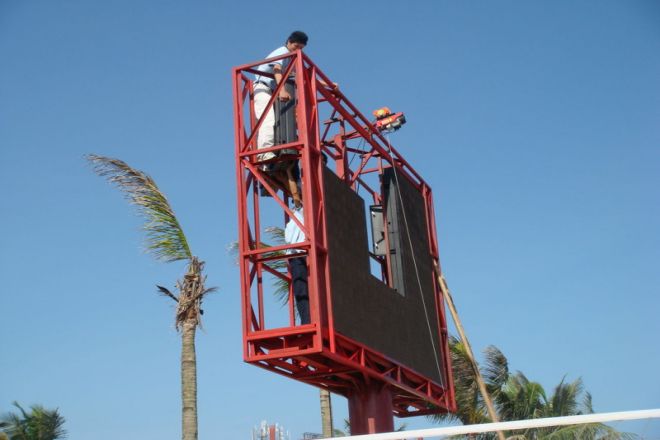
With the continuous development and popularization of LED display technology, LED display screens have become an indispensable information display tool on various occasions.
Different application environments and needs have also given rise to a variety of LED display installation methods.
These installation methods not only affect the installation effect and stability of the display screen but are also directly related to the service life and viewing experience of the display screen. Therefore, choosing the appropriate installation method is crucial for the application of LED display screens.
This article will introduce in detail several common LED display installation methods and analyze their applicable scenarios, advantages, and characteristics in order to provide readers with useful reference and reference.
1. Wall-mounted installation
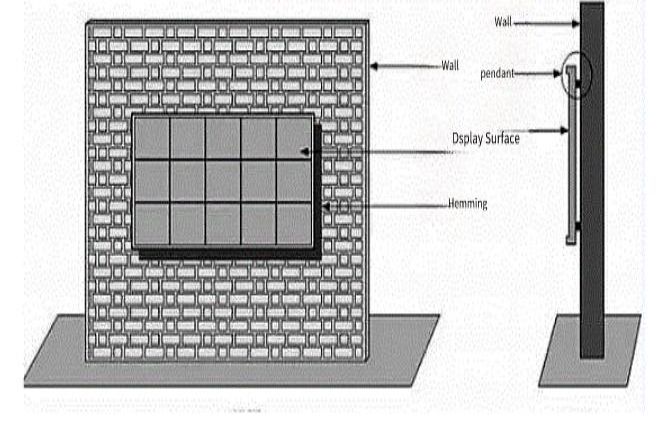
Wall-mounted installation is a common LED display installation method, mainly suitable for indoor walls or outdoor building exterior walls. During the installation process, you first need to measure and determine the installation location of the display to ensure that the wall is flat and has sufficient load-bearing capacity.
Then, according to the size and weight of the display, design and make fixed brackets and pendants to install it on the wall. Finally, hang the display on the stand and make necessary adjustments to ensure the display is flat and stable.
The advantages of wall-mounted installation are that it saves space, is elegant, and is easy to repair and replace. Since the display is close to the wall and does not take up additional space, it is suitable for places with limited space.
At the same time, wall-mounted installation can also be customized according to the color and material of the wall so that the display screen and the wall can be integrated to enhance the overall aesthetics. Additionally, if the display fails or needs to be replaced, wall-mounting makes it easy to remove and install a new display.
2. Hoisting installation
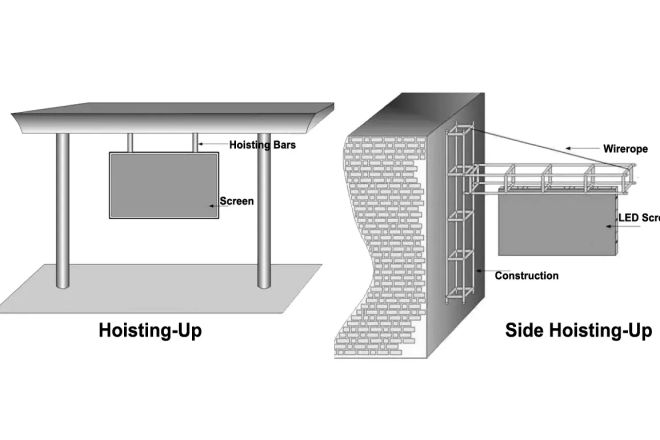
Suspended installation is mainly suitable for indoor high altitude or outdoor building top scenes. During the installation process, the lifting structure needs to be designed and produced, including lifting points, lifting equipment, and fixed brackets.
Then, according to the size and weight of the display screen, please select the appropriate lifting equipment and install it on the lifting point. Finally, hoist the display to the designated location and fix and adjust it to ensure that the display is stable and level.
The advantage of ceiling-mounted installation is that its visual effect is outstanding and eye-catching. Because the display is hoisted high in the sky or on top of a building, it can cover a wider area and attract more people’s attention.
At the same time, ceiling-mounted installation can also be flexibly designed and adjusted according to needs to achieve a variety of different display effects and communication effects. However, it should be noted that hoisting installation has higher requirements for the safety and stability of the hoisting structure and equipment.
Therefore, it is necessary to ensure that the hoisting structure has undergone strict design and testing to ensure safety and reliability.
3. Embedded installation
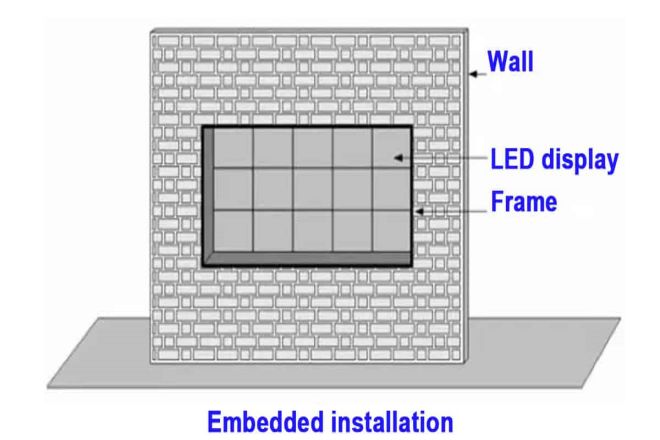
Embedded installation is mainly suitable for indoor decoration, exhibition displays, and other scenes. During the installation process, installation slots and wiring channels need to be reserved to ensure that the display can be embedded into the wall or display cabinet.
Then, according to the size and shape of the display screen, the corresponding fixed frame and embedded structure are made, and the display screen is embedded into the reserved slot. Finally, perform necessary debugging and testing to ensure that the display is working properly and has good display effects.
The advantage of embedded installation is that it closely cooperates with the decoration project, and the visual effect is integrated into the environment. Because the display is embedded into a wall or display case, it blends in with its surroundings and enhances the overall aesthetic.
At the same time, embedded installation can also be customized and manufactured as needed to achieve a variety of different display effects and communication effects.
However, it should be noted that embedded installation has higher requirements on the size and location of reserved slots and wiring channels, so it needs to be closely coordinated with the decoration project to ensure that the slot dimensions are accurate and the wiring channels are smooth.
4. Pole installation
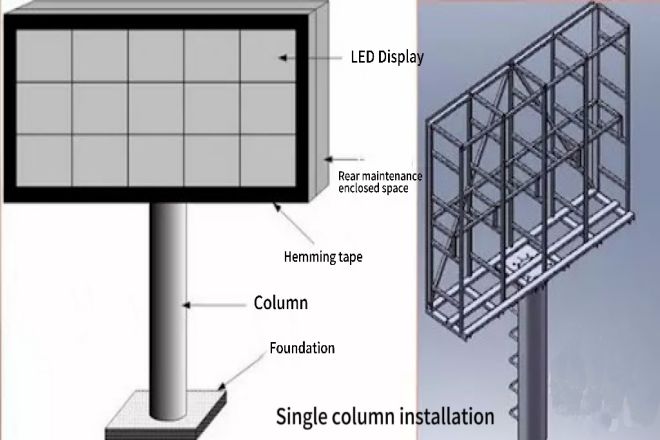
Column installation is mainly suitable for scenes such as outdoor squares and road intersections. During the installation process, the column structure needs to be designed and produced, including columns, display brackets, and fixings.
Then, according to the size and weight of the display, please select the appropriate column and display bracket and install it in the designated location. Finally, install the display on the stand and fix and adjust it to ensure that the display is stable and vertical.
The advantage of column installation is its wide viewing angle and good information dissemination effect. Since the display is mounted on a column, it can cover a wider area, allowing more people to view the information on the display.
At the same time, column-type installation can also be flexibly designed and adjusted as needed to achieve a variety of different display effects and communication effects.
However, it should be noted that column installation has higher requirements for the stability and windproof performance of the column structure and fixings. Therefore, it is necessary to ensure that the column structure has undergone strict design and testing to ensure safety and reliability.
5. Mobile installation
Mobile installation is mainly suitable for temporary activities, exhibitions, and other scenes. During the installation process, a mobile bracket or box needs to be designed and produced to ensure that the display can be easily moved and transported.
Then, according to the size and weight of the display screen, please select a suitable mobile bracket or box and connect and fix it with the display screen. Finally, perform necessary debugging and testing to ensure that the display is working properly and is easy to disassemble and assemble.
The advantages of mobile installation are its flexibility, convenient transportation, and storage. Since the display screen is installed on a mobile bracket or box, it can be moved and transported to different places for use at any time as needed.
At the same time, mobile installations can also be customized and manufactured as needed to achieve a variety of different display effects and communication effects.
However, it should be noted that mobile installation has higher requirements for the stability and portability of the mobile bracket or box. Therefore, it is necessary to ensure that the bracket or box has undergone strict design and testing to ensure safety and reliability.
6. Installation video of indoor LED display
Conclusion
To sum up, different LED display installation methods have their characteristics and advantages and are suitable for different application environments and needs.
In actual applications, it is necessary to choose an appropriate installation method according to specific circumstances to ensure the installation effect and stability of the display and improve the overall user experience and communication effect.
What installation method is used for your LED display? If you are interested in purchasing an LED display, please get in touch with us!
